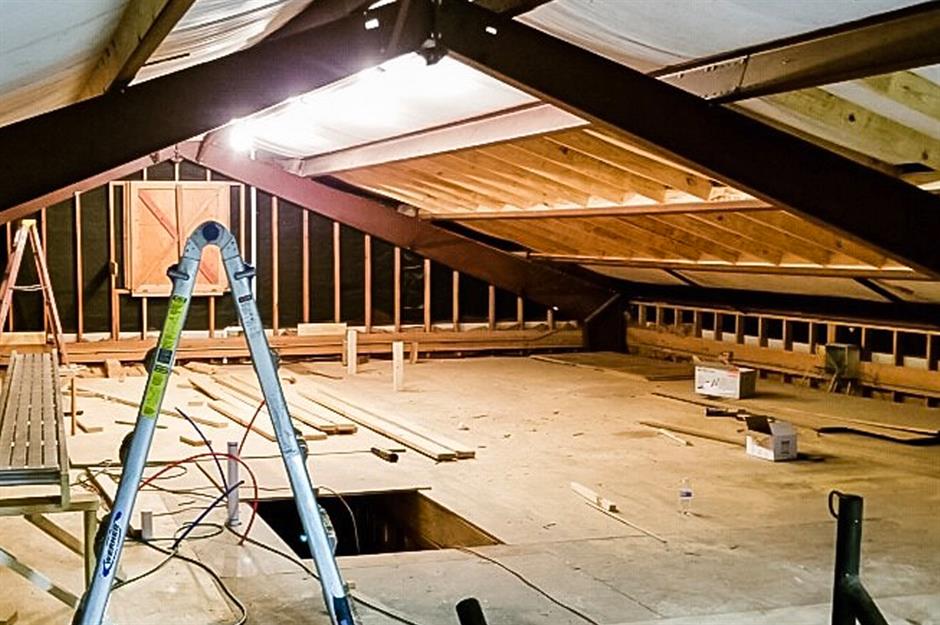Transforming your attic into a creative haven can be a rewarding project. If you’re wondering how to convert attic into art studio, you’re in the right place. This guide will provide you with the steps and inspiration needed to turn that unused space into a vibrant workspace. An attic art studio not only adds value to your home but also provides a dedicated area to nurture your artistic talents.

Understanding the Benefits of an Attic Art Studio
An attic art studio offers several advantages. Firstly, it provides a quiet and private space away from the hustle and bustle of daily life. This separation can enhance your focus and creativity. Secondly, utilizing your attic for creative purposes can increase your home’s market value, making it an appealing feature for future buyers. Lastly, an attic studio can be customized to your specific needs, whether you paint, sculpt, or engage in other artistic endeavors.
Assessing Your Attic Space
Evaluating Structural Integrity
Before diving into the conversion process, assess the structural integrity of your attic. Check for any signs of damage, such as leaks or weakened trusses. For guidance on repairing attic trusses, visit attic truss repair tips.
Measuring and Planning
Measure the dimensions of your attic to understand the available space. Consider the layout, ceiling height, and any obstructions that may affect your design. Planning is crucial to ensure that you make the most of the available area.
Preparing Your Attic for Conversion
Clearing and Cleaning
Begin by clearing out any stored items and giving the attic a thorough cleaning. For tips on maintaining a clean attic roof, refer to attic roof cleaning tips.
Ensuring Proper Insulation
Proper insulation is vital for creating a comfortable art studio. It helps regulate temperature and reduces noise from outside. To learn more about attic insulation, check out the attic insulation guide.
Ventilation Considerations
Ventilation is key to maintaining a healthy and comfortable environment. Proper ventilation prevents moisture buildup and ensures good air circulation. For more information on the importance of attic ventilation, refer to this external resource.
Designing Your Attic Art Studio
Choosing a Color Scheme
The color scheme of your studio can significantly impact your mood and creativity. Opt for colors that inspire you and complement your artistic style. Consider soft, neutral tones for a calming effect or vibrant hues for energy and inspiration.
Lighting Solutions
Good lighting is essential for any art studio. Maximize natural light by installing skylights or dormer windows. Additionally, invest in high-quality artificial lighting to ensure you can work comfortably during all hours of the day.
Organizing Your Space
Effective organization is key to maintaining a productive workspace. Utilize shelving, cabinets, and storage solutions to keep your materials and tools organized. For creative DIY organization ideas, explore the attic organization system.
Adding Personal Touches
Incorporating Art Displays
Showcase your artwork by incorporating display areas within your studio. This not only creates an inspiring atmosphere but also allows you to reflect on your creative journey.
Creating a Cozy Atmosphere
Add personal touches such as comfortable seating, rugs, and decorative elements that reflect your personality. A cozy atmosphere can enhance your creative process and make the studio feel like a true extension of yourself.
Ensuring Safety and Accessibility
Fire Safety Measures
Ensure your attic studio is equipped with fire safety measures, such as smoke detectors and easily accessible exits. For information on planning an attic fire escape, visit attic fire escape planning.
Accessibility Considerations
Consider the accessibility of your attic studio. Ensure that the stairs are safe and easy to navigate. If necessary, explore options for improving accessibility to accommodate all users.
Maintaining Your Attic Art Studio
Regular maintenance is crucial to keeping your studio in optimal condition. Perform routine checks on insulation, ventilation, and any structural elements to prevent issues from arising. Regular cleaning and organization will also help maintain a conducive working environment.
Conclusion
Converting your attic into an art studio is a fulfilling project that can enhance your creativity and add value to your home. By following these tips and considerations, you can create a functional and inspiring space that caters to your artistic needs. With careful planning and attention to detail, your attic can become a sanctuary for your creative pursuits.

FAQ
What is the cost of converting an attic into an art studio?
The cost varies depending on the size of the attic, the materials used, and the complexity of the design. It’s advisable to set a budget and consult with professionals to get an accurate estimate.
Can I convert a small attic into a functional art studio?
Yes, even small attics can be transformed into functional art studios with thoughtful planning and space optimization techniques.
Do I need a permit to convert my attic into an art studio?
Permit requirements vary by location. It’s important to check with your local authorities to determine if any permits are necessary for your conversion project.
This article contains affiliate links. We may earn a commission at no extra cost to you.




